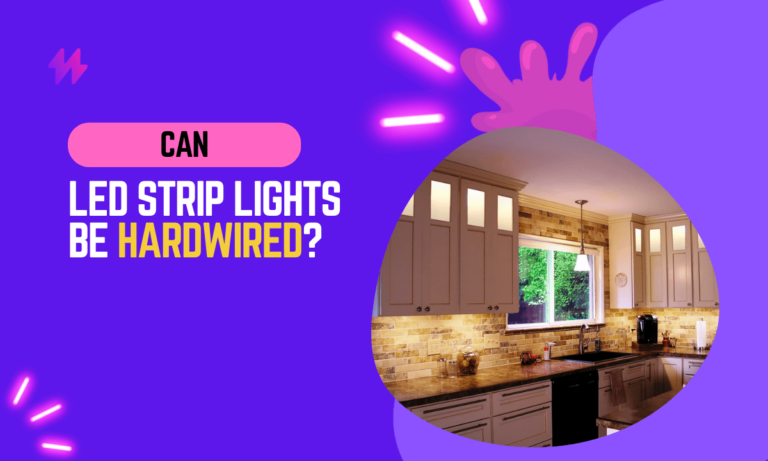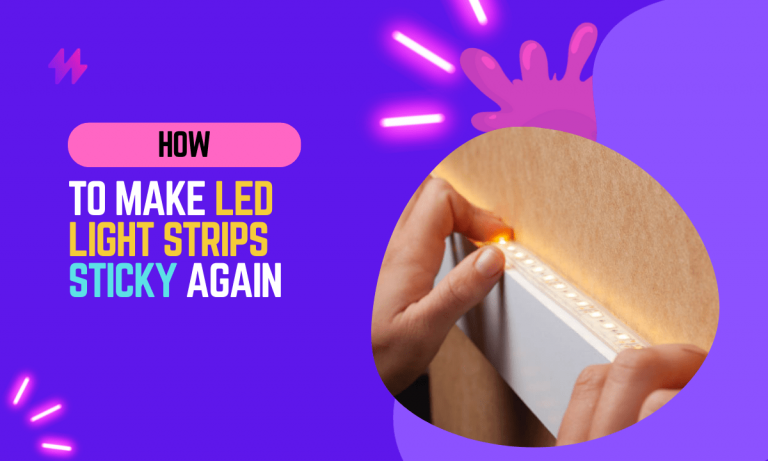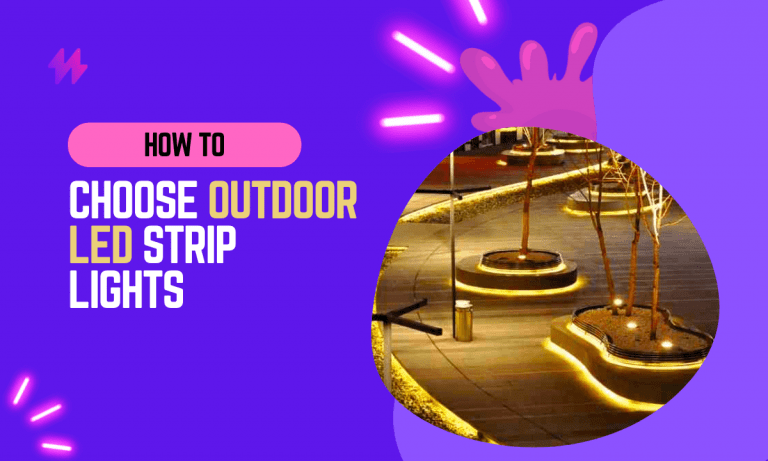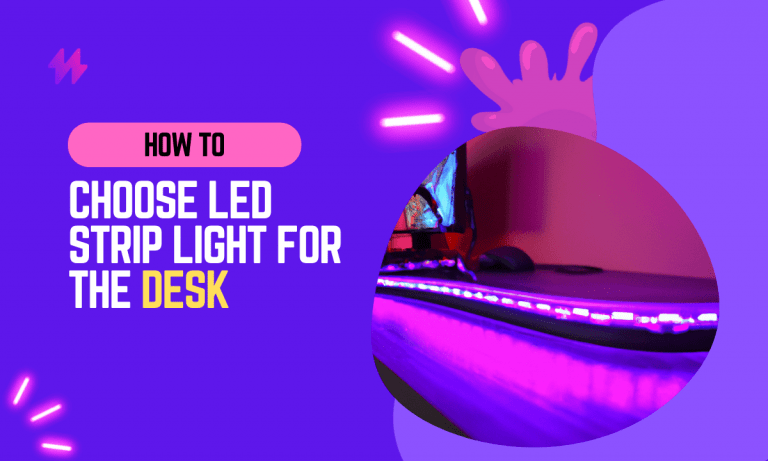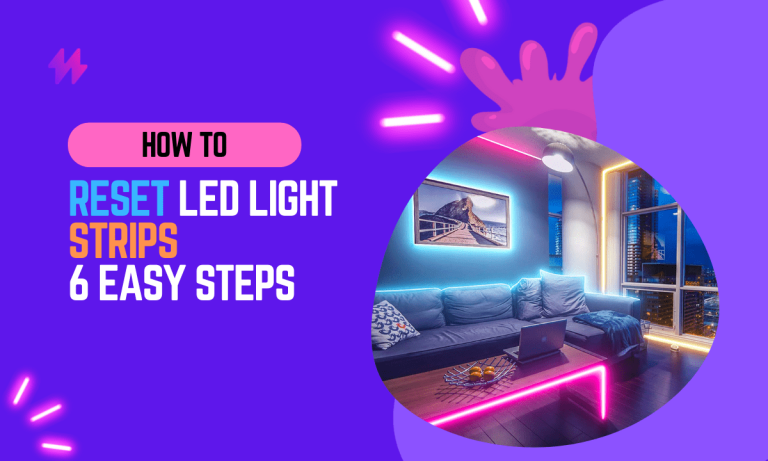2835 vs 3528 vs 5050: Understanding LED Light Strip
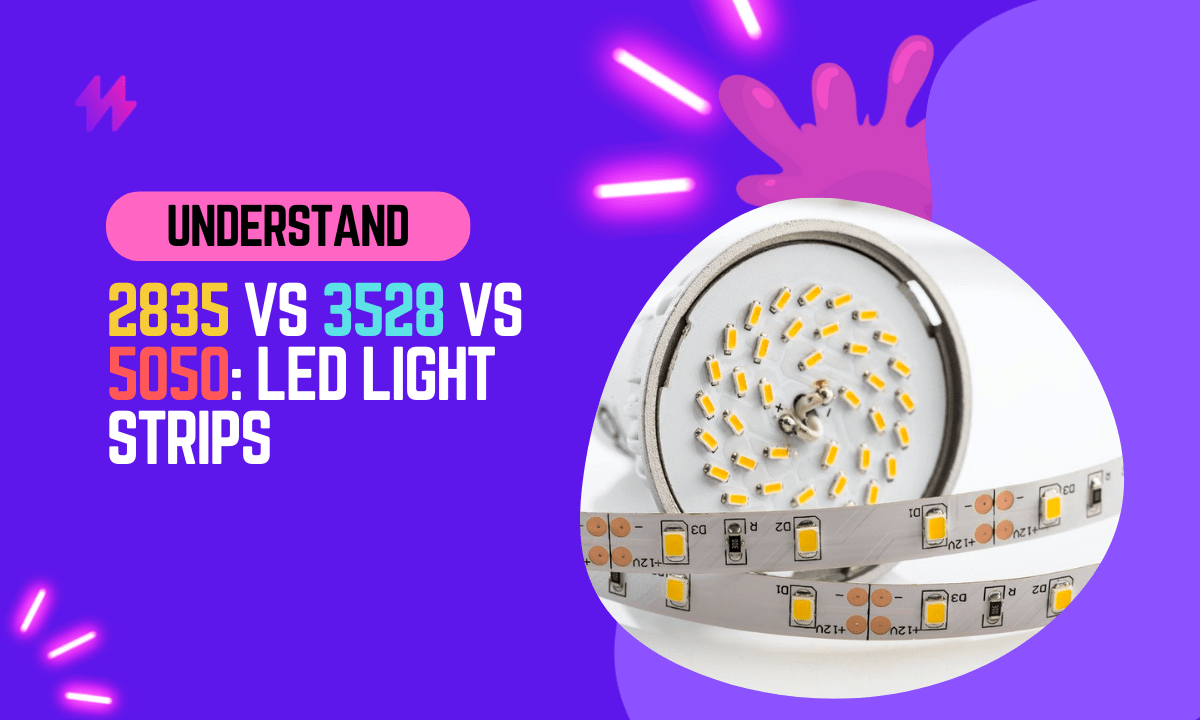
In recent years, LED lighting has revolutionized how we illuminate our homes, workplaces, and outdoor spaces. With their impressive energy efficiency, long lifespan, and vibrant colors, LED light strips have become increasingly popular among homeowners, interior designers, and lighting enthusiasts.
As you embark on your journey to explore LED light strips, you might come across a series of numbers such as 2835, 3528, or 5050. These numbers may seem puzzling initially, but they are key to understanding LED light strips’ specific characteristics and capabilities.
In this blog post, we will look into the meaning behind these numbers and decipher their significance in the world of LED lighting. By unravelling the secrets of 2835, 3528, and 5050, you’ll gain valuable insights into the size, brightness, power consumption, and color options of different types of LED light strips. With this knowledge, you’ll be better equipped to make informed decisions when choosing the right LED light strip for your needs.
When selecting LED strip lights, understanding the differences in chip sizes such as 2835 vs 3528 vs 5050 is essential for achieving the desired bright lighting effects. For instance, 5050 chips are typically 3 times as bright as 3528 chips, making them ideal for applications requiring prominent illumination or high-output LEDs, such as cove lighting or accent lighting projects.
Understanding LED Light Strip: 2835 vs 3528 vs 5050
LED light strips, also known as LED tape or LED ribbon lights, are flexible strips containing light-emitting diodes (LEDs) along their length. These strips are typically made of a flexible circuit board with adhesive backing, allowing for easy installation in various locations.
LED light strips are designed to provide illumination in a linear, continuous manner, making them suitable for a wide range of applications.
LED light strips have transformed our thinking about lighting, offering flexibility, efficiency, and creative possibilities. With their ability to be easily installed, customized, and adapted to various environments, LED light strips have become famous for residential and commercial lighting applications.
LED light strips have become a revolutionary lighting option, providing versatility in both residential and commercial settings. Important elements such as the chip size can significantly influence the performance and illumination-producing capability of these strips, with options in the 2835 vs 3528 vs 5050 range catering to diverse lighting needs such as backlighting and feature lighting.
Understanding LED Light Strip Numbering: 2835 vs 3528 vs 5050
LED numbers indicate the size of the LED in millimeters. It is a four-digit number, of which the first two digits represent the width of the LED. And the last two digits tell you its length. These numbers are usually expressed with the initial ‘SMD,’ which means ‘Surface Mounted Device.’
For example- SMD2835 implies the width of the LED is 2.8 millimeters, and its length is 3.5 millimeters. So, the larger the number, the more prominent the LED size. LEDs can be of different sizes, among which 2835, 3528, and 5050 are the most common.
LED numbers indicate the size of the LED in millimeters, with common sizes including 2835, 3528, and 5050. When considering options like 3528 vs 5050, it’s important to analyze their performance as well as brightness output, which can vary significantly based on the intended application, such as architectural designs or ambient light settings. The choice of LED chip size will affect color rendering and efficiency in various lighting contexts, making it essential to select the perfect strip light for your project needs.
2835 vs 3528 vs 5050: Understanding LED Light Strip Features
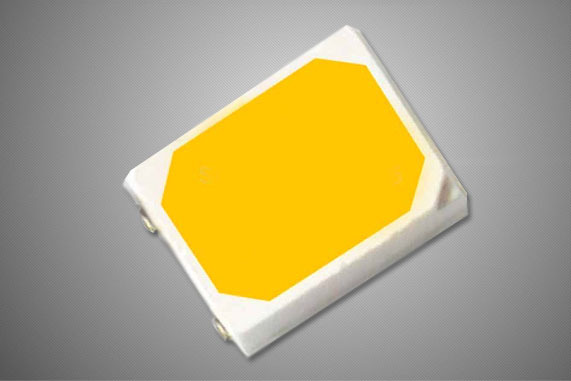
The number 2835 in LED light strip specifications refers to the size of the individual LED chips embedded in the strip. The dimensions of the 2835 LED chip are approximately 2.8mm by 3.5mm, giving it its numerical designation.
2835 LEDs are typically surface-mounted onto the flexible circuit board of the light strip.
These LEDs are known for their compact size and high efficiency.
2835 LED chips are available in various brightness levels, typically low to medium.
They offer a balanced combination of brightness and power consumption, making them suitable for general lighting.
The color options for 2835 LEDs include single-color options like warm white, cool white, and various shades of white, as well as RGB (Red-Green-Blue) options for multicolor effects.
While not as bright as other LED types, 2835 LEDs provide sufficient illumination for many indoor lighting applications.
Application of SMD 2835 LED strip light
The importance of chip size extends beyond just brightness; it affects light uniformity and energy efficiency in a variety of applications. Users should carefully evaluate LED options such as 2835 vs 3528 vs 5050 for both their performance in lighting capability and compatibility with existing lamp fixtures for effective integration into their desired lighting environments.
- Due to their compact size and energy efficiency, 2835 LED light strips are commonly used for general ambient lighting in residential and commercial spaces.
- They are ideal for illuminating areas such as bedrooms, living rooms, hallways, or offices, where a balance between brightness and power consumption is desired.
- 2835 LED light strips can also be used for accent lighting or task lighting in various applications, such as under-cabinet lighting in kitchens or display lighting in retail environments.
SMD 3528 LED Light Strip: Understanding Its Features and Benefits

The number 3528 represents another size specification for LED light strip chips. The dimensions of the 3528 LED chip are approximately 3.5mm by 2.8mm, which gives it its numerical designation.
Similar to the 2835 chip, the 3528 LED chip is surface-mounted on the flexible circuit board of the light strip.
3528 LED chips are known for their compact size and low power consumption. They are available in a range of brightness levels, typically from low to medium, offering sufficient illumination for many lighting applications.
The color options for 3528 LEDs include shades of white and RGB options for multicolor effects. While not the brightest option available, 3528 LED light strips are suitable for applications where a more subtle lighting effect is desired.
Application of SMD 3528 LED strip light
The number 3528 represents another size specification for LED light strip chips. The dimensions of the 3528 LED chip are approximately 3.5mm by 2.8mm, which gives it its numerical designation. Similar to the 2835 chip, the 3528 LED chip is surface-mounted on the flexible circuit board of the light strip. 3528 LED chips are known for their compact size and low power consumption. They are available in a range of brightness levels, typically from low to medium, offering sufficient illumination for many lighting applications. The color options for 3528 LEDs include shades of white and RGB options for multicolor effects. While not the brightest option available, 3528 LED light strips are suitable for applications where a more subtle lighting effect is desired. Application of SMD 3528 LED strip light provides adequate performance for standard lamp fixtures while enhancing the ambiance of enclosed spaces. For those interested in multi-color lighting or dimmable solutions, exploring advanced LED technologies could offer excellent brightness with lower energy consumption compared to traditional fluorescent lighting options.
- 3528 LED light strips are commonly used for accent lighting and decorative purposes in residential and commercial settings.
- They are ideal for creating subtle lighting effects, highlighting architectural features, or providing soft illumination in areas without light.
- These light strips are often used in applications such as cove lighting, signage lighting, or behind furniture to add an elegant touch to the space.
Understanding SMD 5050 LED Light Strips: Key Features and Benefits
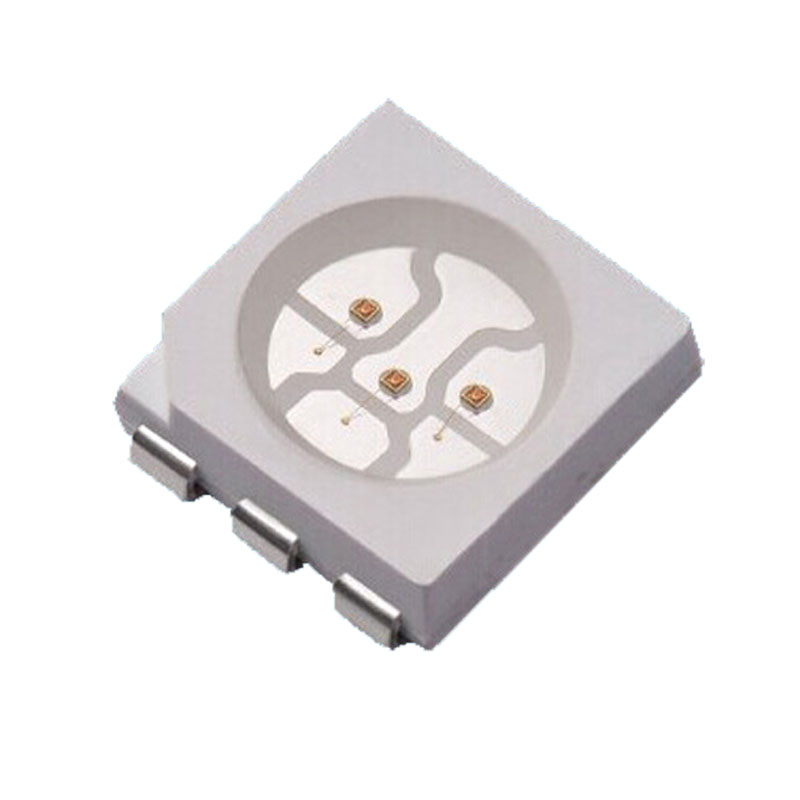
The number 5050 refers to the size specification of the LED chips used in the light strip. The dimensions of the 5050 LED chip are approximately 5.0mm by 5.0mm, which gives it its numerical designation.
The 5050 LED chip is also surface-mounted like the previous types on the light strip’s circuit board.
5050 LED chips are more significant than the 2835 and 3528 chips, resulting in higher light output and brightness. They are known for their high intensity and are available in various brightness levels, including high-output options.
The color options for 5050 LEDs are extensive and include single-color options and RGB options for vibrant multicolor effects. 5050 LEDs can produce rich, vivid colors and are often used for applications that require dynamic or attention-grabbing lighting displays.
Application of SMD 5050 LED strip light
The 5050 LED chip is particularly popular for applications requiring vibrant RGB lighting, thanks to its ability to produce rich colors and high intensity. When choosing between different LED strips, such as the 2835 vs 3528 vs 5050, it’s crucial to consider the specific requirements of your lighting design, including factors like brightness output and efficiency.
- 5050 LED light strips are popular for applications that require bright and vibrant lighting effects.
- They are often used in settings where color-changing or dynamic lighting is desired, such as entertainment areas, bars, clubs, or stage lighting.
- Additionally, 5050 LED light strips find use in architectural lighting projects, trade show displays, and outdoor applications where high visibility and impact are essential.
Comparison Table: 2835 vs 3528 vs 5050 LED Light Strips
| Factors | 2835 Strip | 3528 Strip | 5050 Strip |
|---|---|---|---|
| Size of LED Chip | 2.8mm x 3.5mm | 3.5mm x 2.8mm | 5.0mm x 5.0mm |
| Brightness | Low to Medium | Low to Medium | Low to High |
| Power Consumption | Low to Medium | Low | Medium to High |
| Color Options | Single-color, RGB | Single-color, RGB | Single-color, RGB |
| Lighting Applications | General lighting, accent lighting, under-cabinet lighting | Accent lighting, decorative lighting | Dynamic lighting, architectural lighting, entertainment lighting |
| Common Uses | Residential, commercial, and indoor lighting applications | Decorative lighting, signage, cove lighting | Architectural lighting, stage lighting, outdoor lighting |
| Cost | Moderate | Affordable | Moderate |
| Flexibility | Flexible | Flexible | Flexible |
| Durability | Varies | Varies | Varies |
| Waterproof Options | Available | Available | Available |
Selecting the Ideal LED Light Strip for Your Requirements
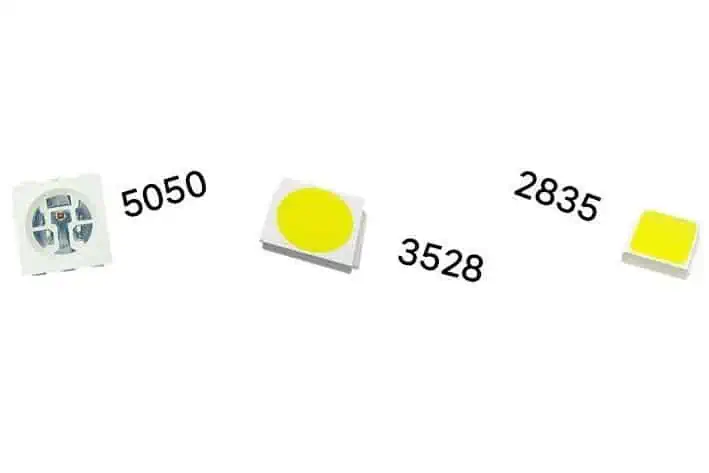
- Determine the purpose and application of the LED light strip, whether for general lighting, accent lighting, or decorative effects in residential, commercial, or outdoor spaces.
- Measure the installation area and consider any bends or obstacles that may affect the length or flexibility of the LED light strip.
- Assess the power source availability and decide between plug-in or hardwired options, considering additional components like power adapters or controllers.
- Evaluate brightness requirements and consider lumens or similar units to ensure the desired light intensity emitted by the LED light strip.
- Decide on the color options, whether you need single-color or multicolor (RGB) LED light strips, to achieve the desired lighting effects.
- Consider power consumption and efficiency ratings to balance brightness and energy efficiency, ensuring cost-effectiveness and environmental friendliness.
- Research reputable manufacturers and brands, read customer reviews, compare prices, and seek expert advice to make an informed decision based on quality, features, warranty, and budget.
Final Thoughts on LED Light Strips and Their Applications
In conclusion, choosing between the 2835, 3528, and 5050 LED strip types is essential for tailoring lighting solutions to specific needs, each model offering unique characteristics in terms of brightness, energy efficiency, and application suitability. The 3528 models are typically the smallest and are well-suited for low-light areas where a subtle accent is needed rather than full illumination. Their smaller size and lower power consumption make them ideal for compact spaces or applications where intricate designs or continuous light strips are required without overwhelming brightness. Conversely, the 5050 LEDs are larger and capable of emitting three times the light of 3528 LEDs, making them suitable for areas that require high brightness, such as under cabinet lighting in kitchens or in commercial displays where catching the eye is paramount.
Moreover, the 2835 LEDs represent a newer technology that often combines the compact size of the 3528 with efficiency and light output closer to that of the 5050. This makes them a versatile and increasingly popular choice for both residential and commercial applications, providing a balanced option for those needing both moderate brightness and lower power consumption. When choosing among these LED types, it is also important to consider factors such as the overall energy consumption, the heat generation of the LEDs, and the specific color temperature and color rendering index required for the project at hand. Each type of LED strip has its advantages and specific uses, and understanding these can help in making an informed decision that aligns with project requirements and personal or business needs. This way, whether the priority is ambiance, task lighting, or decorative flare, the lighting chosen will enhance the space efficiently and effectively.
2835 Vs 3528 Vs 5050: Understanding LED Light Strip | Key Differences Between 2835, 3528, and 5050 LED Light Strips
Understanding the differences between 2835, 3528, and 5050 LED light strips reveals significant variations in brightness, power consumption, and applications. The 2835 vs 3528 vs 5050: Understanding LED Light Strip comparison highlights their distinct lumens output, with the 2835 typically offering around 990-1080 lumens per metre, while the 5050 can emit between 1320-1440 lumens per metre. These variations impact their suitability for various lighting needs, from creating strong ambient light in architectural spaces to serving as a light source for LCD backlighting applications. The 3528, with a single 20 mA LED chip, is ideal for applications requiring subtle illumination, making it a common choice for monochromatic lighting and dimmer compatibility. In contrast, the 5050 model, featuring many LEDs in a rectangular package, allows for brighter output with high lumen density, making it effective for dense lighting applications such as feature lighting and strip light production.
2835 vs 3528 vs 5050: Understanding LED Light Strip | Brightness and Lumens Output
The brightness output of LED light strips varies significantly among the 2835, 3528, and 5050 models. The 2835 strips typically emit 330-360 lumens per meter, providing a reliable light source for many applications, including architectural lights and feature-lighting applications. On the other hand, the 3528 model generally contains a single 20 mA LED chip, which results in lower brightness and a maximum output of around 240 lumens per meter. For those seeking brighter light solutions, the 5050 standard-power LEDs can achieve outputs of 660-720 lumens, making them ideal for areas requiring uniform lighting or high-quality illumination.
Understanding the differences in optical performance among these LED types can aid consumers in making informed decisions. The 2835 and 5050 strips offer superior light-emitting surfaces, suitable for both accent and task lighting. While the 3528 is limited to single-color lighting with lower output brightness, it excels in applications where slight illumination is preferred, such as indirect lighting. The various LED sizes and densities also play a crucial role in their respective lighting performance, influencing the overall light source phenomenon experienced in different environments, from 4-ft fluorescent lamps to LED strip products designed for versatility in color and application.
Color Options and Temperature Variability
LED light strips, including 2835, 3528, and 5050 types, offer a diverse range of color options and temperature variability. The 2835 and 5050 strips provide superior light output, featuring multiple LEDs per meter, which enhances their brightness and versatility. 3528 typically contains a single 20 mA LED chip, making it better suited for single-color lighting applications. This strip’s color options may include standard white light tones alongside vibrant colors, yet the brightness restriction limits its use in areas needing bright fluorescent lighting. On the other hand, the 5050, with its light-emitting areas, shines in high-quality colour LEDs, offering a broader palette, while maintaining a superb reliability.
Temperature variability is crucial for adaptable lighting solutions in various environments. For instance, 2835 LED strips can deliver different white-light tones, allowing for flexible illumination in settings like ceiling lamps and E12 lamp fixtures. The 5050 LEDs often come with secondary optics, optimizing the light emission surface for ambient lighting needs. For projects requiring more precise lighting, such as cob lighting or LED fixtures, the 3528 strip may prove more efficient due to its lower power levels and compact lamp size. Light product comparisons reveal that each type has its strengths, where the choice ultimately depends on desired aesthetics and functional requirements.
Energy Efficiency of Each LED Light Strip Type
The energy efficiency of LED light strips can vary significantly among the 2835, 3528, and 5050 types, impacting their suitability for various applications. These types are designed to provide equivalent brightness while consuming fewer watts compared to traditional fluorescent tubes. For instance, the 2835 LED package type features a higher density of emitters per meter, yielding better output and efficiency than the 3528, which offers standard colors and a more compact design. The 5050 strip light examples include options for RGB and single color lighting, maximizing versatility while maintaining energy efficiency. Users can expect a 7.5-watt tape for high-quality illumination and extensive color options, including white LEDs and blue light, making it easier to select the perfect reel for any linear light source requirement. With LED technology advancing, understanding how each type stands in terms of watts and brightness restraints is essential for making informed choices in lighting solutions. The light product selector can help determine the best fit based on capacity and application needs.
Power Consumption Comparison
The comparison of 2835 vs 3528 vs 5050: Understanding LED Light Strip reveals significant differences in power consumption among these types. The 2835 LED strip lights have a higher LED density, often utilizing around 60 LEDs per meter, resulting in efficient energy use with many watts dedicated to producing the same brightness as other types. In contrast, the 3528 type, with its lower LED density of around 30 LEDs per meter, consumes less power, but may not maintain equivalent brightness levels unless more strip lights are used. High-quality options like the SMD5630 can also enhance light output while managing low voltage effectively.
Power consumption also varies based on the application of these strip lights. While the 5050 LED lights, with their quad LED emitters, can provide vibrant colours at a slightly higher energy cost, they are favored in environments where brightness and color diversity are paramount. The smd3528 and a21 lamps serve well in settings prioritizing standard colours and lower power draw, making them ideal for accent lighting. Choosing the right type hinges on understanding the strip lights output desired, ensuring that consumers match their LED lamp preferences to the appropriate LEDs/meter for their needs.
Lifespan and Durability Considerations
The lifespan of LED strip lights varies significantly among the types. The 2835 model typically boasts a longer lifespan compared to the 3528. High-quality options such as ledyi sm3528 may serve well, but often they don’t match the durability of 5050 LEDs. Considering the performance, 5050 models stand out with their impressive efficiency and longevity. This makes them a preferred choice for applications requiring strip lighting that withstands the test of time. Users evaluating 2835 vs 3528 vs 5050: Understanding LED Light Strip should focus on how these variations influence overall performance.
Durability is another critical factor in determining the best choice among led-per-metre strip lights. The construction quality of LEDs p/m affects their resistance to wear and environmental factors. The 5050 LEDs excel in this area, often featuring robust casings that enhance endurance against harsh conditions. On the other hand, while the 3528 strip lights are aesthetically pleasing, they may not hold up as well in demanding settings. Selecting the right type involves weighing the various considerations of lifespan and durability, highlighting the importance of high-quality products in the 2835 vs 3528 vs 5050: Understanding LED Light Strip discussion.
Applications of 2835, 3528, and 5050 LED Light Strips
The versatility of LED light strips makes them suitable for various applications, each benefiting from the unique features of the 2835, 3528, and 5050 models. Understanding LED light strip options is crucial for selecting the perfect fit for a project. For instance, 2835 strips are ideal for spaces requiring high-quality illumination, providing excellent brightness without excessive power consumption. The 3528 option offers softer lighting, making them a great addition to ambient settings. On the other hand, 5050 strips excel in vibrant color output, ideal for creative lighting solutions where color depth is essential. Consumers looking for high-quality light solutions often find themselves comparing 2835 vs 3528 vs 5050, ensuring they make an informed choice tailored to their specific needs. Hitlights, a popular brand, showcases the diversity of these LED strips, making it easier to find the right one for any lighting project.
Best Use Cases for Each Type
The 2835 LED light strips are often favored for applications requiring a high-quality, bright output. They shine brightly with a focus on efficiency, making them ideal for general lighting in residential setups, retail displays, and task lighting. Their slim design also allows for easy integration into tight spaces while maintaining a vibrant illumination. 2835 vs 3528 vs 5050: Understanding LED Light Strip reveals that their superior brightness and energy efficiency make them suitable for environments where visibility is crucial.
On the other hand, 5050 LED light strips are known for their versatility and are best suited for ambient lighting and decorative applications. Their higher lumen output allows for stunning color displays, perfect for events, parties, or accent lighting in homes. The 3528 strips are more suited for low-light settings and can be effectively used for mood lighting or subtle accents in interior design. Understanding how 2835 vs 3528 vs 5050: Understanding LED Light Strip performs in different environments helps users make informed choices based on their specific lighting needs.
Creative Lighting Solutions with LED Strips
LED light strips provide versatile options for enhancing both residential and commercial spaces, allowing for creative and dynamic lighting solutions. With the distinctions highlighted in 2835 vs 3528 vs 5050: Understanding LED Light Strip, users can choose high-quality strips that fit their specific needs. For instance, 5050 strips are ideal for areas requiring bright illumination, while 2835 and 3528 strips offer a more subtle glow, perfect for ambient lighting.
By integrating these LED strips into various design elements, one can achieve an array of effects to complement any decor. Accent lighting on shelves, backlighting for televisions, or illuminating architectural features are just a few examples of how these strips can transform a space. Understanding the characteristics of each type, as discussed in 2835 vs 3528 vs 5050: Understanding LED Light Strip, helps users tailor their lighting to create the desired atmosphere effectively.
Installation Considerations for LED Light Strips
Understanding the installation considerations for LED light strips involves recognizing the specific features of each type. The 2835 vs 3528 vs 5050: Understanding LED Light Strip comparison highlights the differing brightness levels and flexibility, which impact installation methods. High quality LED strips, like the 5050, may require more robust support due to their increased weight and luminosity, whereas the slimmer 2835 and 3528 models can be easier to handle in tight spaces. Proper tools and materials are essential to ensure a secure fit and optimal performance, maximizing the benefits of each type and enhancing the overall lighting design.
Tools and Materials Needed
Choosing the right tools and materials is essential for a successful LED strip installation. For 2835 vs 3528 vs 5050: Understanding LED Light Strip, gather a measuring tape to assess spaces, scissors for cutting strips, and a soldering iron if necessary for custom lengths. A power supply compatible with the specific LED type is crucial, as is a reliable adhesive or mounting clips to secure the strips in place. Having these items on hand will streamline the installation process.
Safety and efficiency should guide preparation. A multimeter can help ensure that connections are secure and functioning properly. For 2835 vs 3528 vs 5050: Understanding LED Light Strip, it’s wise to use heat-shrink tubing or electrical tape to prevent any exposed connections. Proper ventilation and workspace organization will aid in creating a neat and effective installation environment, essential for achieving the best results with your chosen LED strips.
StepbyStep Installation Guide
Before beginning installation, gather all necessary tools and materials. A clean surface, measuring tape, scissors, adhesive backing, and connectors are essential for a successful setup. Each LED strip type offers distinct advantages, whether it’s 2835, 3528, or 5050. Understanding the specifics of 2835 vs 3528 vs 5050: Understanding LED Light Strip can make a significant difference in the effectiveness of your installation.
After preparing the area and cutting your LED strips to length, adhering them properly is crucial. Remove the backing from the adhesive and press firmly along the installation surface. Consider the power source and where you will connect your LED strips, ensuring compatibility with your chosen type. Knowledge of 2835 vs 3528 vs 5050: Understanding LED Light Strip will enhance your ability to select the best configuration for your lighting needs.


